Recently I surmounted all my mostly aesthetic biases against the Leica M3 and purchased one again after selling my first in the early 90s. My first M3 was an early example double-stroke with the film pressure plate made of glass. It had a 50mm Summitar f2 in decent condition. During the time that I owned it, it mostly stayed in the cabinet drawer most of the time. Looking back, I wonder now why I let her go. Drum roll… Foremost is economics. And secondary is aesthetics. Due to the vagaries of the US economy I hit a rough patch at the time, and the M3 was the only available asset of value that could potentially keep me from going bankrupt. I am not 100 per cent enamored by the M3’s styling cues, particularly the raised frame that surround its viewfinder/rangefinder windows. I looked up to the M2 and the M4 with a clean and sleek fascia as examples of aesthetic perfection. I don’t have a beef with the mechanics of the M3, despite its admittedly fiddly film loading when compared with the M4 and later variants, ie, M4-2, M4-P, M6, M7, etc.
I purchased my second M3, a late model single-stroke, from Canada Camera in Montebello, California, some forty minutes drive from my home in Playa del Rey. This store had been my source for most of my Nikon and Leic cameras since the late 1980s; the owner and I have developed a friendship. A second visit to the store a few weeks ago opened an opportunity to purchase another Leica, and its a Barnack Leica IIc in great aesthetic and mechanical condition. But my decision to own it was the excellent collapsible 50mm Summicron screw-mount lens. When I held the kit in my hands I was pleasantly surprised by the weight; it was a lot lighter but no less dense than a Leica M. It reminded me of the weight and size of my Olympus Pen F half-frame camera. A deal is done, and I came home with my very first Barnack Leica.
Long story short, the Summicron ended up mounted on the M3. That’s been my plan from the get-go, at any rate. Now, and this is a confession, I am not a big fan of the 50mm focal length. I used mostly a 28mm wide-angle on my Nikon F since I began shooting professionally in the 70s, and to this day, I still favor that focal length as my go-to walkabout lens. The 50mm is too narrow for my way of framing images; it feels like a short telephoto every time I peer through it. But today I am reconsidering my biases and will begin using it in earnest, and maybe I would learn to love for its specific purpose.
In all my years owning Leicas (M4, M4-2, M3 and Leicaflex) I have rarely shot with the 50mm lens. Nowadays, I think, that their prices have skyrocketed. Before buying the 50mm Summicron, I had considered the slightly less expensive Elmar 50mm f2.8, and had my eyes peeled for a bargain-priced Summicron on eBay, But even examples in poor, scratched condition were still hovering in the $500 to $600 range. So when I first laid my eyes on the IIc and he ‘cron, I knew I had to have it. My example was made in 1955 and in excellent condition overall; I offered to buy it minus the IIc, but Pham, the store-owner and repair technician would, not sell it separately.
The opportunity to put the M3 through its paces came in late July when I took my family for a weekend jaunt to Santa Barbara, a beach community about 120 miles northwest of Los Angeles. As a side note, SB sits jus about five miles from the community of Montecito, where television personality Oprah Winfrey and British royals Prince Harry and Duchess Meghan have homes. SB is a picturesque and historic town, owing to its being one of the original sites of a dozen or so Spanish missions established in this territory before it became a US state. As such, SB has a preponderance of Spanish-styles houses, government buildings and commercial establishments; even the local McDonalds restaurant hews to the town’s Spanish heritage.
Today, a few blocks of the main drag, State St., is closed to vehicular traffic, making it the haven for bicyclists, joggers, residents walking their dogs, and tourists. It is a perfect place for people-watching and street photography.
I screwed on a 39mm skylight filter on the lens to protect it from dusts and bruising of the front element. These 50s vintage lenses were made with very soft glass, and I want to preserve my lens’ pristine condition for as long as possible. I shot with a 36-shot roll of Ilford HP5 in box speed. The rig, not surprisingly, felt heavy hanging from my neck; that felt reassuring. The lens as I would find out exhibited results that were typical of lenses made in the 1950s and earlier eras; my example was made in 1955, according to the Leica Pocket Book by Brian Tompkins. The resolution is there, but it is not bitingly apparent when compared to newer ‘crons. The highlights showed slight glowing, which I found quite pleasing. I may have lost some acutance in the scanning process, but I can’t be sure at this juncture. I metered the scenes (bright sunlight) with a 70s-vintage Gossen Luna Pro with a 15/7.5 degree spot attachment set at 15 degree.
The nesting property of the ‘cron screw-mount is a plus as it reduces the thickness of the camera and lens combo (when collapsed), making it eminently pocketable in cargo pants and jacket coat pockets. The following photos are some that I culled from my SB sortie. I am happy I bought the lens when I did. Am I satisfied with my kit? You bet your sweet ASA. 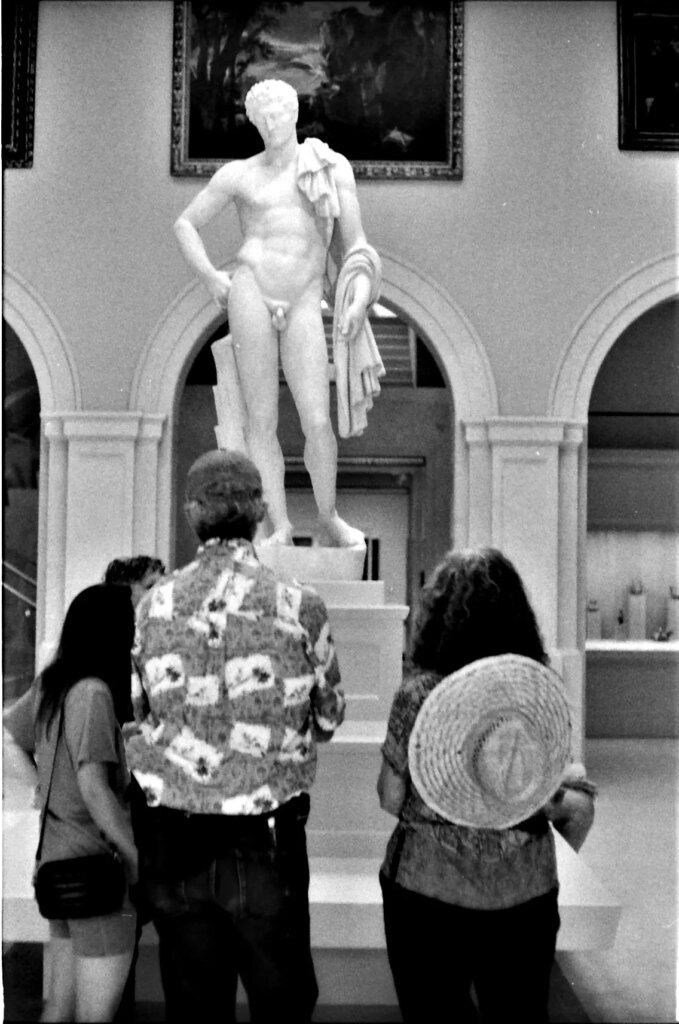
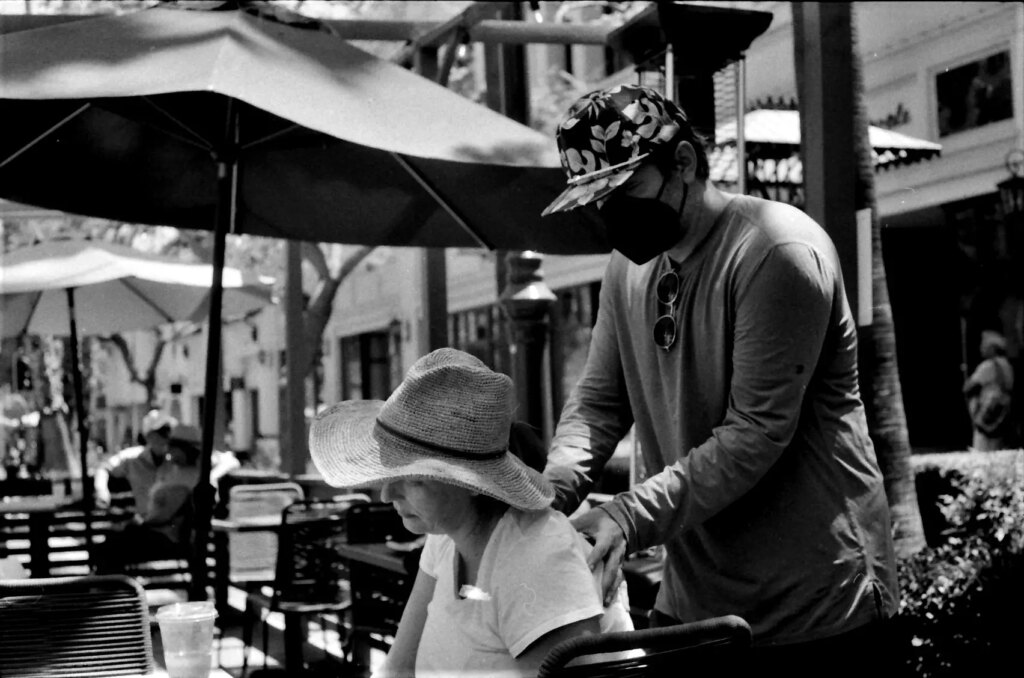
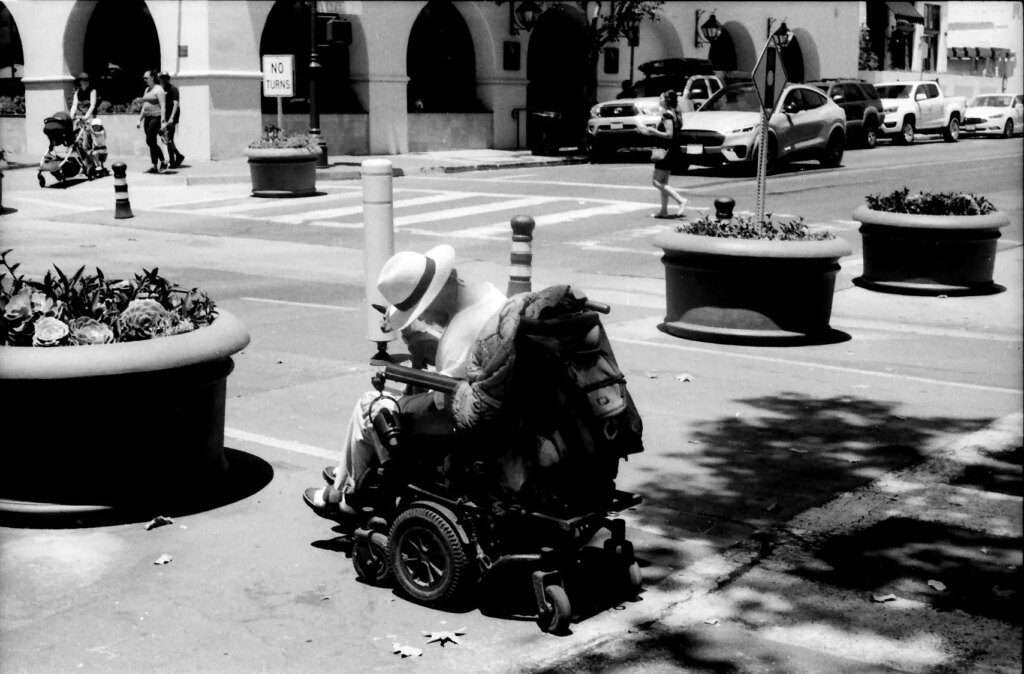
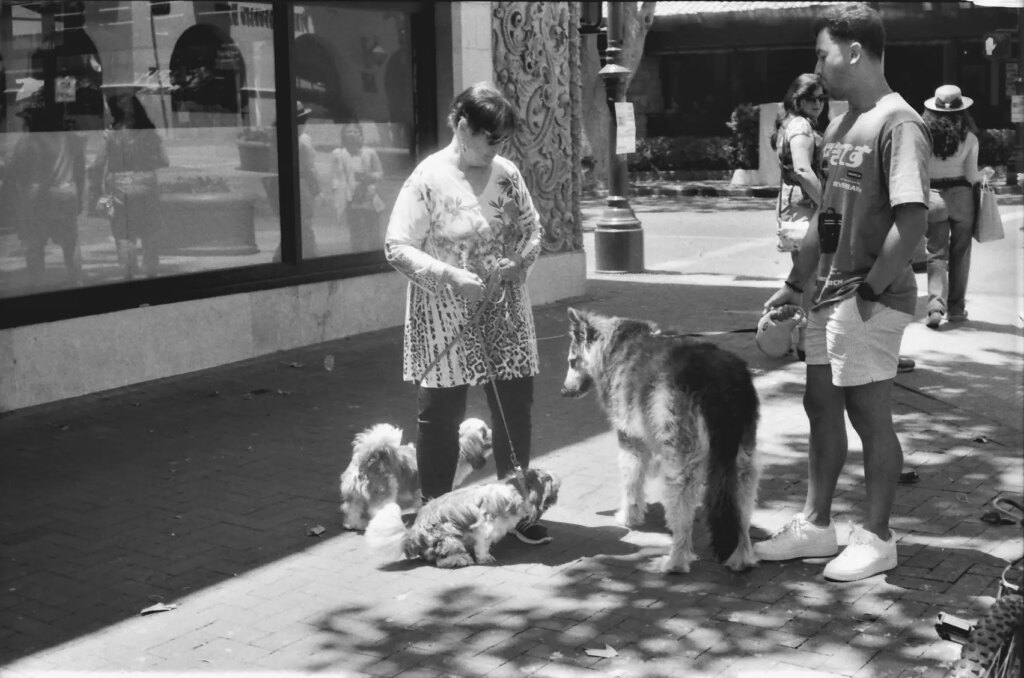
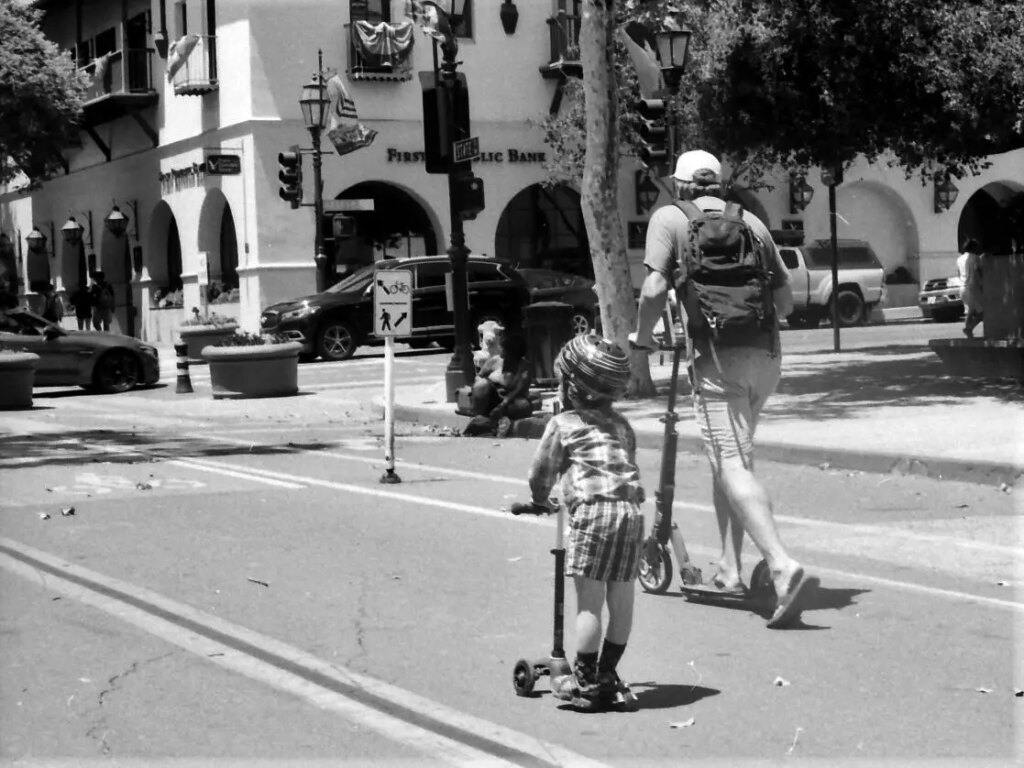
You can view more of my photographs on Instagram @renevillaroman
Share this post:
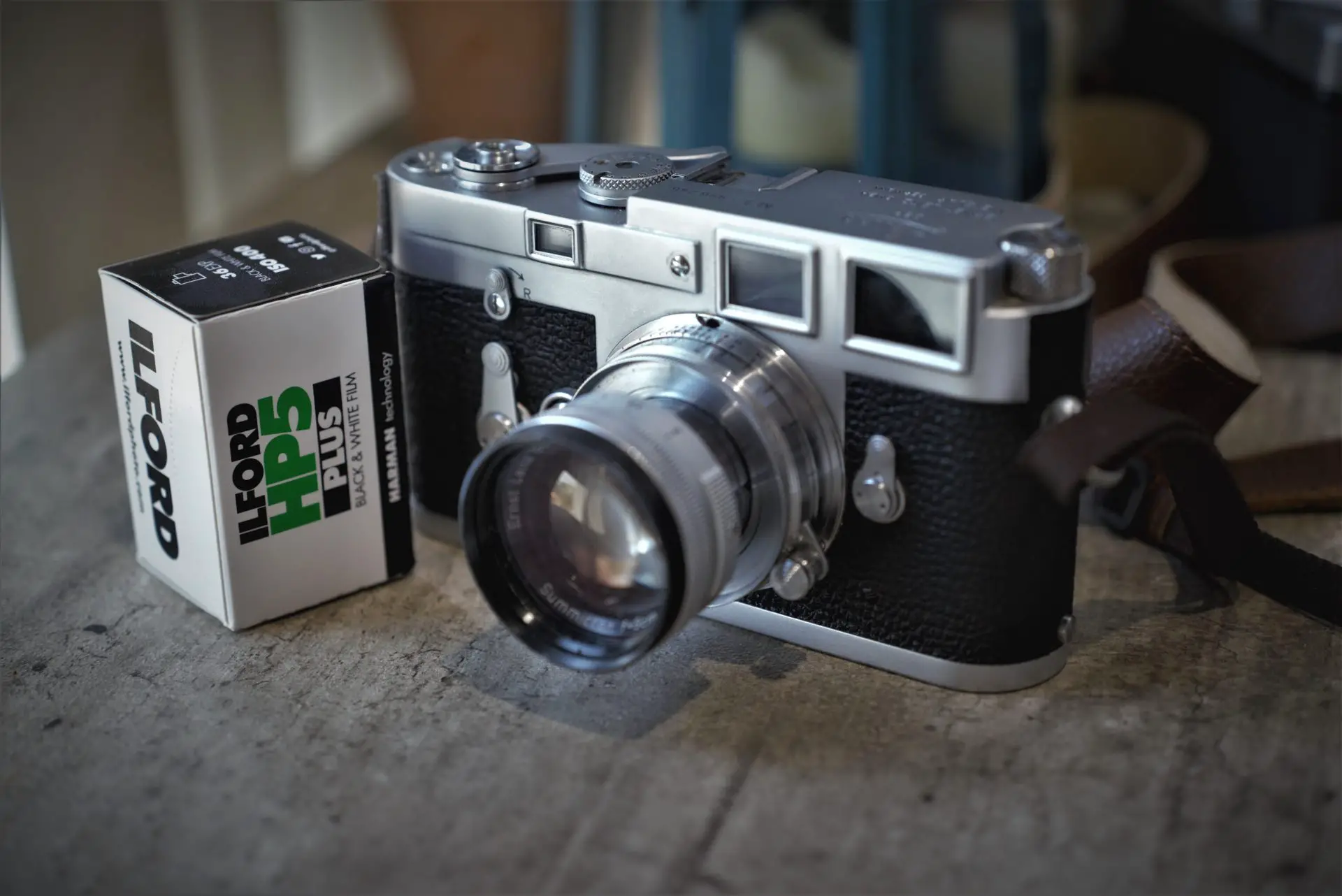








Comments
Clarice Machia Gutmann on 5 Frames with Leica M3 and 50mm Summicron – By Rene Villaroman
Comment posted: 19/09/2022
Comment posted: 19/09/2022